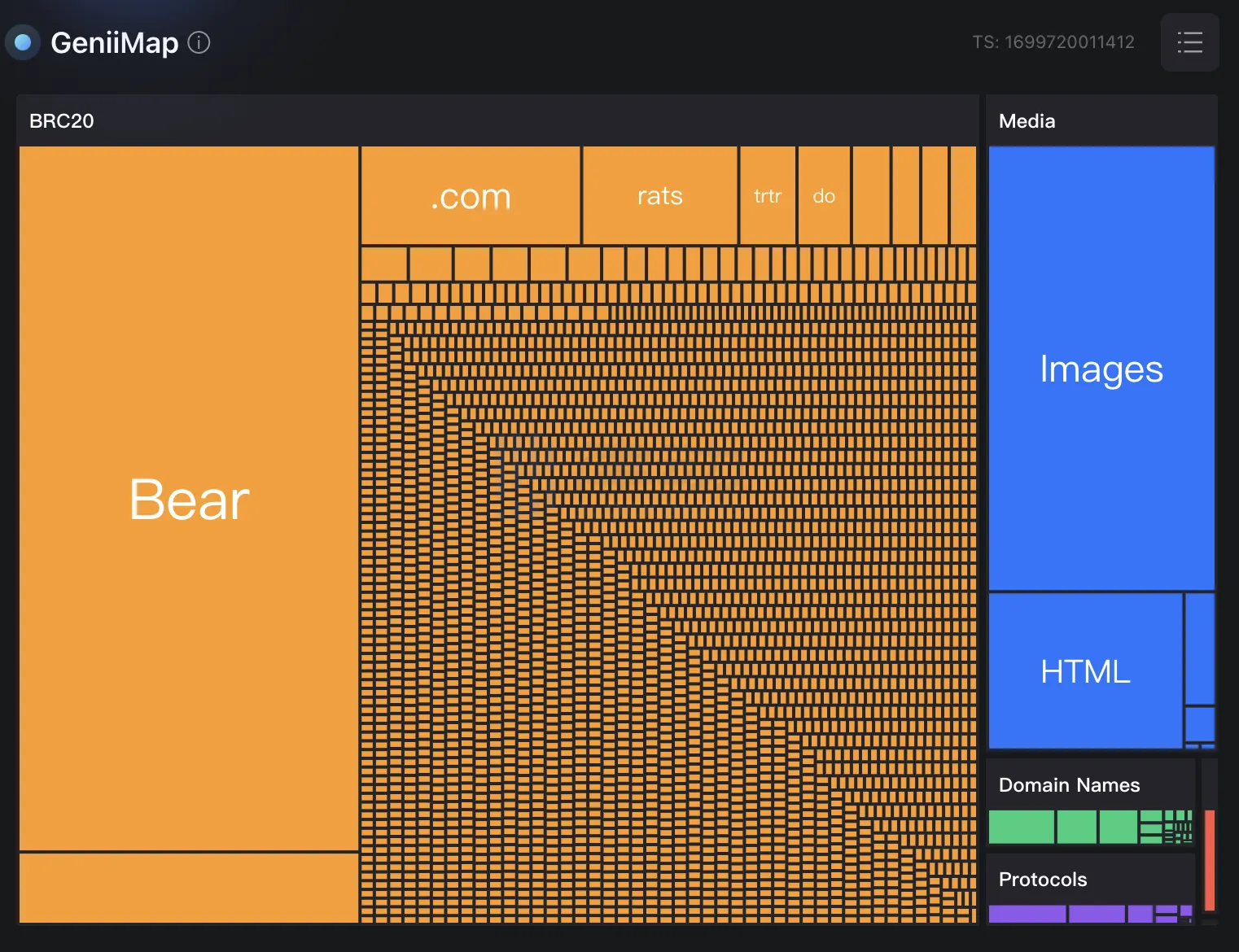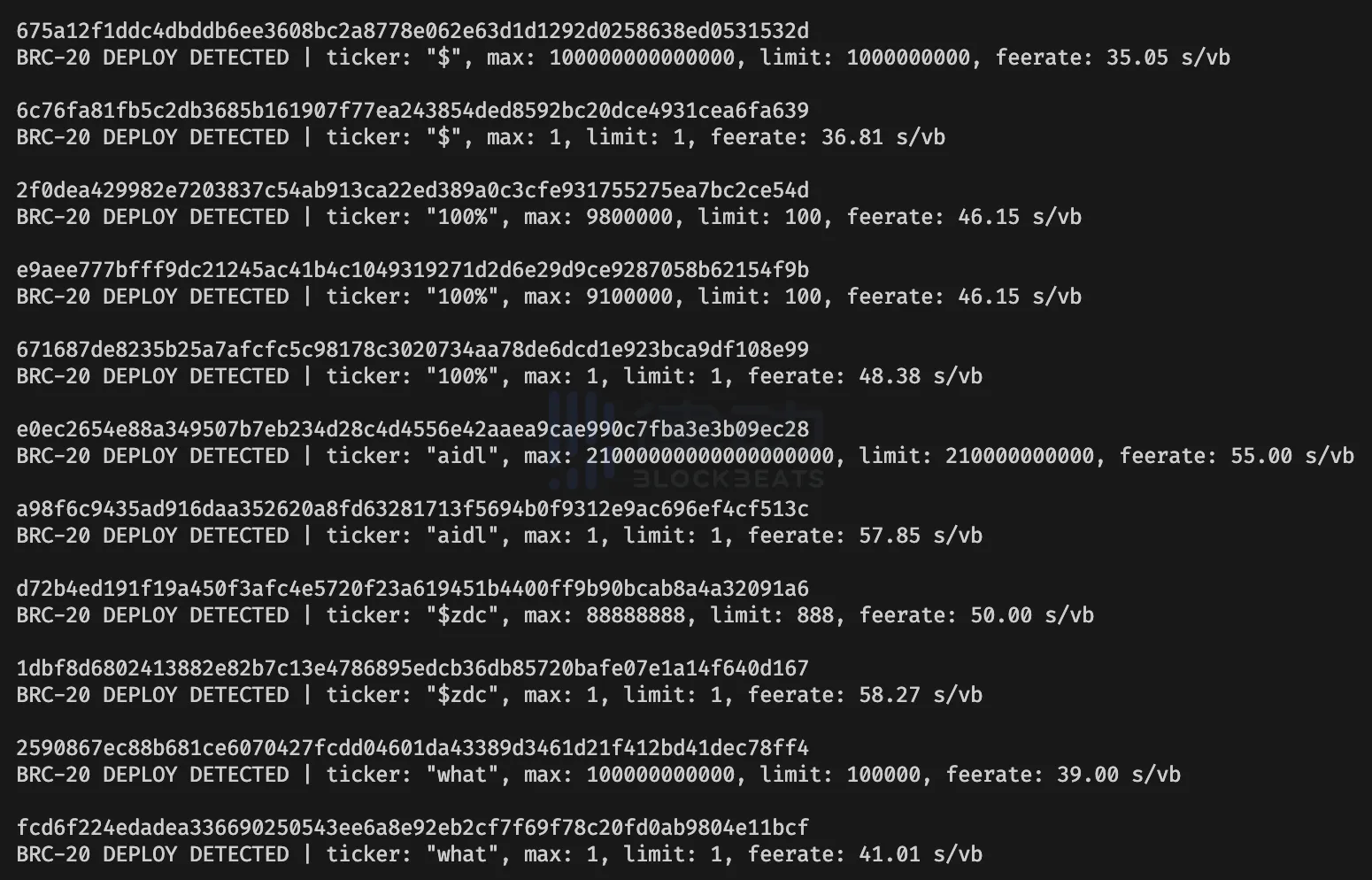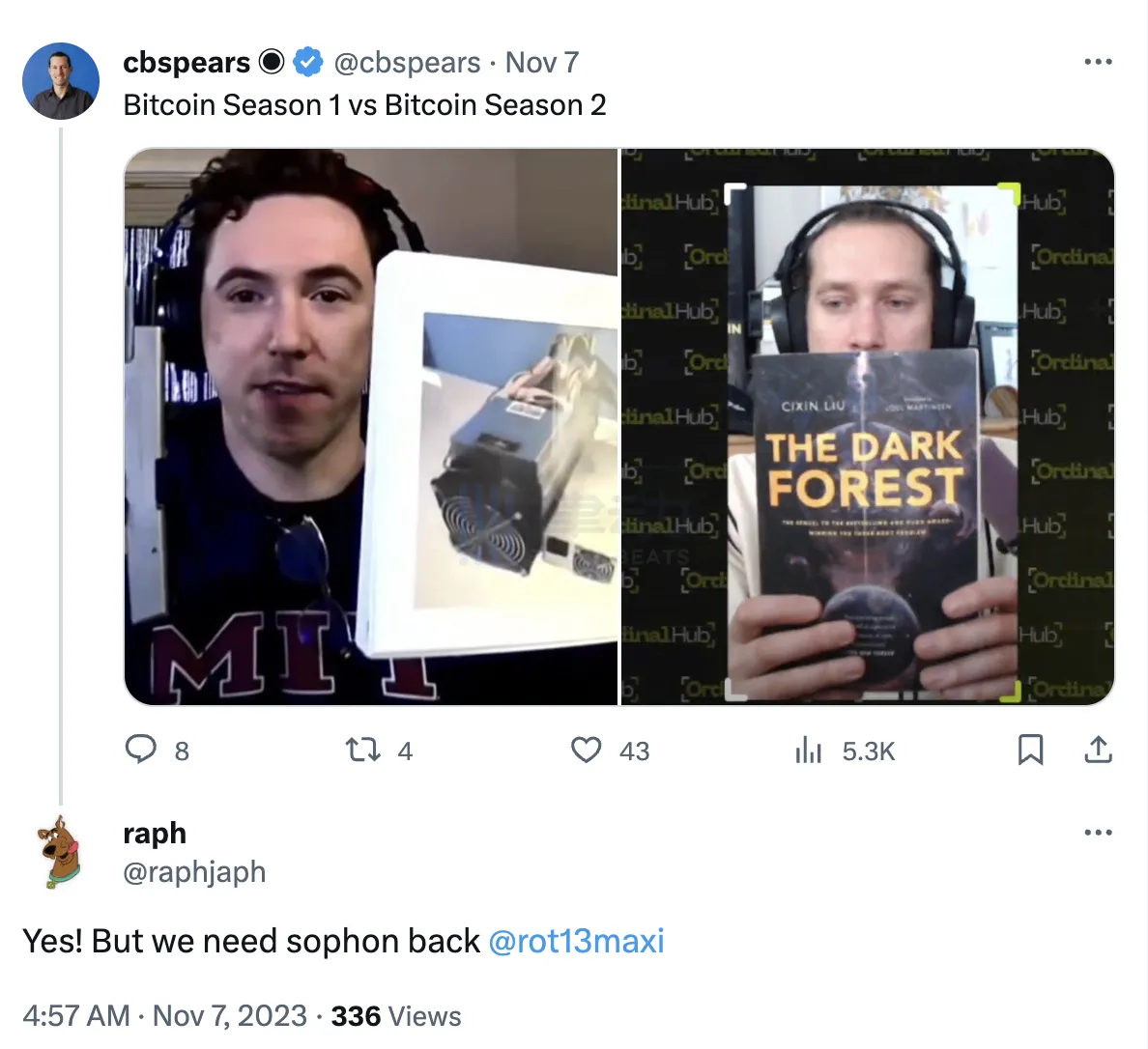If you are interested in science fiction novels, you must have heard of "The Three-Body Problem" and its "sophons" - micro-particles controlled by the Trisolarans, which unfold protons into two dimensions and etch them with circuits to create supercomputers, becoming the ambassadors of the Trisolarans on Earth, monitoring humans and locking the foundation of Earth's science.
Now, the "sophon robot" has arrived in the BRC-20 ecosystem.
As shown in the figure below, there are many inscriptions in the mempool of BRC-20 with a supply quantity of 1 or single digits. This is because someone has deployed a front-running robot. Whenever a new inscription deployment appears in the mempool, the robot will deploy a similar name (tink), set the supply to 1, and complete the deployment first by paying a high gas fee, preventing others from deploying tokens with the same name.

Creating a block with a quantity of 1 is a masterpiece of sniping the newly created tink. Image source: GeniiData
What is the sophon robot of BRC-20?
The BRC-20 token sniper robot was deployed by Bitcoin developer Rijndael (@rot13maxi) on October 3rd, as publicly stated in a declaration, inspired by the science fiction novel "The Three-Body Problem."

Before introducing the attack principle of Sophon, we need to understand the operating rules of BRC-20 tokens. Whether it is deployment, minting, or transfer, they all follow the first-come, first-served rule. For deployment, if a BRC-20 token with the same name is deployed, the first deployment is considered the only successful deployment.
Related reading: "Binance Finally Launches ORDI, Understanding BRC-20 After Half a Year of Speculation"
Sophon uses the "first-come, first-served" and the public nature of transactions. The robot monitors the mempool, and whenever a new BRC-20 token is deployed, the robot pays a high gas fee to deploy a token with the same name first, setting the supply to 1. This prevents others from obtaining the newly deployed tokens, and the supply of tokens deployed by the robot is only 1, unable to enter the market circulation.

The gap is the deployment phase of Sophon. Image source: Dune
Ordinals Hub maintainer cbspears (@cbspears) also commented, "Since the deployment of Sophon, the UTXO quantity has decreased by more than 10 million, and at the moment he shut down Sophon, the UTXO quantity started to increase. Rijndael is actually saving Bitcoin."
However, recently, with Rijndael open-sourcing the Sophon code, similar sniper robots have started to operate in the mempool of BRC-20. Rijndael stated in an interview, "I think there is a copy of Sophon running, and it's not me, which is great."
Mempool is PVP, Stress Test for BRC-20
Opinions in the community about the existence of Sophon are mixed. Some believe it is beneficial for the already deployed BRC-20 tokens, while others say it is the revenge of Bitcoin OG, protecting Bitcoin from BRC20 dust attacks. Even Ordinals protocol chief maintainer raph (@raphjaph) jokingly called for the need for Sophon in the comments section of a tweet about the Bitcoin ecosystem.

The left side is a mining machine, and the right side is Liu Cixin's science fiction novel "The Dark Forest" from the "Three-Body" series.
But to Rijndael, the deployer of Sophon, he needs to prove to those who support BRC-20 that using Bitcoin as a "global naming space based on block inclusion order is a vulnerable mechanism."
Rijndael referred to the mempool of BRC-20 as "PVP," player versus player, because the game rules of BRC-20 are first-come, first-served, just like a real MMO game, where you need to be vigilant against attacks from other players. Rijndael stated in an interview, "You have to assume there are monsters lurking in the mempool, and if your deployment is vulnerable to attack, the monsters will come and eat your tokens."
We can infer from Rijndael's donation of Bitcoin from UTXO to opensats that his deployment of Sophon was not for profit, perhaps it can be understood as a stress test for BRC-20.
However, it is unknown whether Rijndael deployed Sophon to truly improve the rules of BRC-20, as his response to why he did it was, "For civilization."

MEV on Bitcoin?
"No one tells me there's no MEV on Bitcoin anymore," and Sophon's existence has sparked discussions in the community about Bitcoin MEV and Private Mempools.
The term MEV originated from Ethereum, originally an abbreviation for "Miner Extractable Value." After Ethereum transitioned from PoW to PoS, it was renamed "Maximal Extractable Value."
Under the POW mechanism, when a user submits a transaction on the blockchain, the transaction information is not immediately recorded in a block, but is temporarily placed in a publicly visible pool of pending transactions, where everyone can see its contents. Arbitrageurs and miners can monitor this transaction pool and use it to maximize profits. For example, during the process of block packaging, miners can use their power to prioritize submitted transactions, placing their own transactions ahead of legitimate users' transactions to increase the cost of legitimate users' transactions.
Private Mempool typically refers to the memory pool of a specific node that is independent of the public network memory pool. The public network memory pool contains a collection of unconfirmed transactions waiting for miners to package and add to blocks, while the private mempool is maintained solely by a specific miner or network node.
The operating rules of BRC-20's mempool - transaction transparency and first-come, first-served - can lead to MEV if exploited. Imagine what would happen if more than one front-running robot like Sophon appeared in BRC-20's mempool?
免责声明:本文章仅代表作者个人观点,不代表本平台的立场和观点。本文章仅供信息分享,不构成对任何人的任何投资建议。用户与作者之间的任何争议,与本平台无关。如网页中刊载的文章或图片涉及侵权,请提供相关的权利证明和身份证明发送邮件到support@aicoin.com,本平台相关工作人员将会进行核查。




